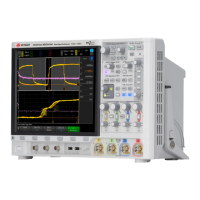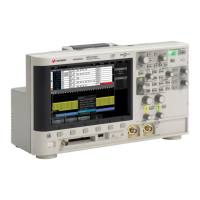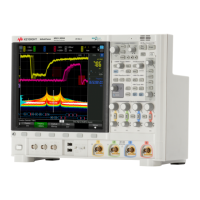50 1000 X-Series Oscilloscopes Service Guide
4 Troubleshooting
To compensate passive probes
You should compensate your passive probes to match their characteristics to the
oscilloscope’s channels. A poorly compensated probe can introduce measurement
errors.
1 Perform the procedure “To perform an Auto Scale on the Probe Comp
signal" on page 49
2 Press the channel key to which the probe is connected ([1], [2]).
3 In the Channel Menu, press Probe.
4 In the Channel Probe Menu, press Probe Check; then, follow the instructions
on-screen.
If necessary, use a nonmetallic tool (supplied with the probe) to adjust the
trimmer capacitor on the probe for the flattest pulse possible.
On the some probes, the trimmer capacitor is the yellow adjustment on the
probe tip. On other probes, the trimmer capacitor is located on the probe BNC
connector.
Figure 7 Example pulses
5 Connect probes to all other oscilloscope channels (channel 2 of a 2-channel
oscilloscope).
6 Repeat the procedure for each channel.
The process of compensating the probes serves as a basic test to verify that the
oscilloscope is functional.
Perfectly compensated
Over compensated
Under compensated

